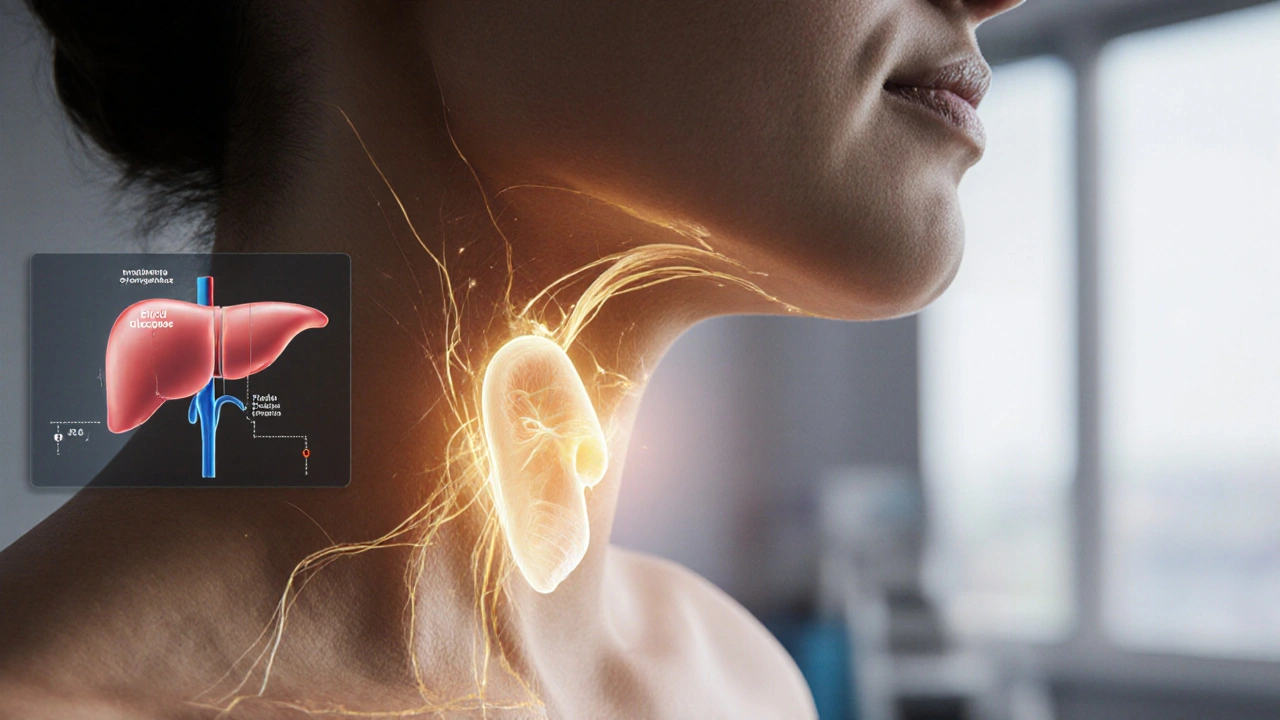Hyperthyroidism: Causes, Symptoms, and How to Manage It
Hyperthyroidism can feel like your body’s stuck in fast‑forward. When dealing with hyperthyroidism, an overactive thyroid that accelerates metabolism and triggers symptoms such as rapid heartbeat, weight loss, and anxiety. Also known as overactive thyroid, it often stems from autoimmune activity or nodular growths. Understanding the basics helps you catch warning signs early and decide on the right steps.
One of the most frequent triggers is Graves' disease, an autoimmune disorder where antibodies stimulate the thyroid to produce excess hormones. This explains why eye bulging, skin thinning, and tremors often accompany the metabolic surge. Recognizing Graves' disease is vital because it not only drives hyperthyroidism but also influences treatment choices and long‑term monitoring.
Besides Graves' disease, other culprits include toxic multinodular goiter—where autonomous nodules release hormone without regulation—and postpartum thyroiditis, a temporary inflammation after pregnancy that can flip to an overactive state. Each cause shares the core problem: too much thyroid hormone flooding the bloodstream. Knowing the specific origin guides doctors toward the most effective therapy, whether medication, radioactive iodine, or surgery.
Symptoms can be subtle at first: jittery hands, heat intolerance, and trouble sleeping. As the hormone excess grows, you might notice a racing pulse, unexplained weight loss despite a good appetite, or frequent bowel movements. Mood swings, irritability, and difficulty concentrating are common too, making daily tasks feel harder. Because the body’s systems are interconnected, untreated hyperthyroidism can strain the heart, weaken bones, and even trigger atrial fibrillation.
How Doctors Confirm Hyperthyroidism
The diagnostic cornerstone is the thyroid‑stimulating hormone test, or TSH, a blood marker that drops when thyroid hormone levels are high. Low TSH paired with elevated free T4 or T3 confirms the excess. Doctors may also order thyroid antibodies to pinpoint Graves' disease, or perform a radioactive iodine uptake scan to see if nodules are responsible. Imaging such as ultrasound helps assess gland size and detect suspicious nodules that might need further attention.
When it comes to treatment, the first line is often methimazole, an antithyroid drug that blocks hormone production and stabilizes blood levels. Most patients start with a low dose that titrates upward until TSH normalizes, usually within weeks. For those who cannot tolerate methimazole, propylthiouracil (PTU) offers an alternative, especially in pregnancy. In cases where medication isn’t enough or the patient prefers a definitive fix, radioactive iodine ablation or surgical removal of part of the gland become viable options.
Medication alone isn’t the whole story. Lifestyle tweaks can ease symptoms and support recovery. A balanced diet rich in calcium and vitamin D helps protect bone health, while limiting caffeine and excess iodine can reduce heart palpitations. Stress‑management techniques—like short walks, deep‑breathing exercises, or gentle yoga—counteract the nervous energy that hyperthyroidism generates. Regular follow‑up blood tests, typically every six weeks during adjustment, keep you and your doctor on the same page.
Below you’ll find a collection of detailed articles covering everything from specific drug comparisons and lab interpretation to practical tips for living well with an overactive thyroid. Dive in to get the information you need to take control of your health and make informed choices.
Hyperthyroidism and Diabetes: How They Influence Each Other
Explore how hyperthyroidism affects diabetes management, spot overlapping symptoms, and learn medication, lifestyle, and monitoring tips to keep both conditions under control.

